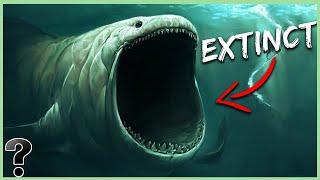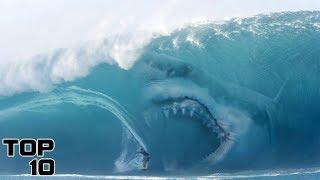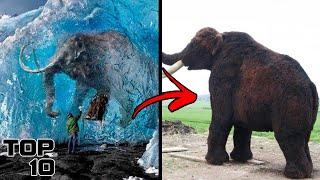Top 10 Extinct Marine Animals
Description
Top 10 Extinct Marine Animals
If you're new, Subscribe! → http://goo.gl/djmfuX
For copyright queries or general inquiries please get in touch: [email protected]
Sources: https://pastebin.com/EdnJdhmX
Top 5 Best is the #1 place for all your heart warming stories about amazing people that will inspire you everyday. Make sure to subscribe and never miss a single video!
#viralstory #amazingpeople #top5best
Top 10 Extinct Marine Animals
If you think today’s oceans hold amazing wildlife, just try to imagine what marine life was like millions of
years ago. The prehistoric oceans were home to slew of amazing animals, some of which we will be
talking about today.
From what looks to be a dolphin-crocodile hybrid, to a huge whale that ate other whales, here are the
top 10 extinct marine animals.
Number 10. Dearcmhara Shawcrossi
This amazing marine creature looks like the resulting baby if a crocodile and a dolphin somehow
successfully mated, making it definitely the coolest looking animal on today’s list. It’s also one that. up
until recently, an animal that scientists weren’t really aware of. Its fossil remains were first discovered in
1959, but scientists only announced this new Ichthyosaur in 2015. They called it Dearmchara, which in
Scottish Gaelic means “marine lizard” and it swam in the then warm waters of Scotland around 170
million years ago.
Measuring up to 14 feet in length, the Dearcmhara Shawcrossi was believed to be at the top, or at least,
near the top of the food chain back in its day, likely feeding on smaller fish and reptiles. It was way
smaller than later ichthyosaurs which came around 20 million years later, which made researchers
believe that the shift to larger aquatic life may have been subtler than the sudden shift in temperature
of volcanic eruption some folks have theorized might have preceded the change.
Number 9. Temnodontosaurus eurycephalus
Speaking of later ichthyosaurs, here’s the Temnodontosaurus eurycephalus, which lived in the early
Jurassic period about 175 million years ago. It was way bigger than the previous entry, but at 30 feet
long, it wasn’t the largest one around. Still, it was a very formidable predator.
It was a powerful swimmer with strong jaws, well-equipped to chow down on other Jurassic swimmers.
A species closely related to it possessed the largest eyes of any known animal, perfect for hunting in
deeper oceanic waters; another has been found with the remains of a different ichthyosaur in is
stomach.
This monster considered 13-foot oceanic reptiles a delicious snack. And it swam so fast, you would
definitely pity the poor ocean-going creatures minding their own business before one of these huge
creatures rams into them from below at speed, opens those long, toothy jaws and turns them into
lunch.
Number 8. Anomalocaris canadensis
Before killer whales and polar bears, before sharks and tyrannosaurs, the world’s top predator was
probably a bizarre animal called Anomalocaris. It lived in the Cambrian period, over half a billion years
ago, when life was confined to the seas and animals took on bizarre shapes that haven’t been seen
since.
Many scientists believe that Anomalocaris ruled this primordial world as a top predator. At up to a 3 and
a half in length, it was the largest hunter of its time. It chased after prey with undulating flaps on its
sides and a large fan-shaped tail. It grabbed at them with large spiked arms. It bit into them with a
square, tooth-lined mouth. And it tracked them with large stalked eyes.
The surfaces of the eyes are covered in tiny lenses, packed in a hexagonal grid. Each eye has at least
16,700 individual lenses, making this animal the proud owners of the most sophisticated compound
eyes ever known. Only a few arthropods have similar or better resolution, such as modern predatory
dragonflies that can possess up to 28,000 lenses in each eye.
Number 7. Liopleurodon
Liopleurodon was an aquatic reptile predator with four paddle-like fins and an enormous pair of jaws.
Most peoples' first encounter with this creature was in 1999 when the BBC featured this marine reptile
in its popular Walking with Dinosaurs TV series. Unfortunately, the producers depicted Liopleurodon
with a grossly exaggerated length of over 80 feet, while a more accurate estimate is 30 feet. Still, 30
feet, 4 feet of which is jaws, is still a bit too big for comfort.
Although Liopleurodon didn't represent the evolutionary peak of underwater propulsion, which is to say,
they weren't as speedy as modern Great White Sharks, they were certainly fleet enough to fulfill their
dietary needs. With its four broad, flat, long flippers, Liopleurodon could thrust itself through the water
at a considerable speed and, perhaps more important for hunting purposes, quickly accelerate in pursuit
of prey when circumstances demanded.





















Comments